| Converting Nova 1624 to variable speed drive.
By Steve Harder
My goal was to do the upgrade for under $500. And I wanted the upgrade to be a two-way street, I wanted to be able to reinstall original motor if necessary. I wanted to use the original motor sheave so I’d have 8 speed ranges to choose from. I had 230V single phase in my shop and couldn’t upgrade to 3phase so wanted a VFD with single phase input.
The tech support at automationdirect.com was very helpful. They answered a number of ‘amateur’ questions and helped me select the equipment. The total price on motor, motor mount, and variable frequency drive was $379 delivered. I spent another $50 for accessory items and the homebuilt small remote box.
I started my conversion planning by choosing the motor.
Specs:
2hp (A 1.5hp motor was almost the same price – and VFDs don’t usually come sized for 1.5hp so I’d be buying the 2hp VFD anyway).
1800 rpm
3phase – 230V (VFD operation requires 3ph)
Mount with a CFace (to match up with the existing Nova motor mount).
Shaft diameter of .875inch (7/8 inch) to fit Nova motor sheave. (I considered this very important as I really wanted use the original motor belt sheave combo.)
Physical size and weight approximating Nova original motor. (Same diameter motor case so motor would fit beside the T-handle belt adjustment slider.)
AutomationDirect.com
MTC-002-3BD18 AC MOTOR 2HP 1800RPM 208-230/460VAC 3PH IRONHORSE, CAST IRON 145T 1 $137.00 68.0
MTA-CFACE-140TC C-FACE KIT FOR 143T AND 145T MOTORS REPLACES DRIVE END BELL, FIELD INSTALL 1 $11.00 6.0
(You can also purchase motor with Cface mount preinstalled. They were out of stock when I ordered MTC-002-3BD18CK $158).
Online Manual for motor http://www.automationdirect.com/static/manuals/ironhorsemanual/ironhorsem.pdf
I did not purchase a more expensive “inverter duty rated” motor. Tech support told me I just didn’t need it for the light duty usage I would be putting this motor to on a wood lathe.
Then I speced the VFD – based on the hp rating of the new motor.
AutomationDirect.com
GS2-22P0 GS2 2.0 HP AC DRIVE 230V 1/3 PH IN 3 PH OUT 1 $241.00 3.68
Online manual for VFD
http://www.automationdirect.com/static/manuals/gs2m/gs2m.pdf
This unit is the bottom end of prices for a 2hp drive that can use single-phase input.
I didn’t purchase a more expensive “vector sensorless” VFD because I would also need the “inverter rated” motor. The small variable loads we put on these motors doesn’t require a sophisticated speed control system. Leave the expensive stuff for the factory floor.
First uninstall the old motor mount from lathe. Put the belt at a middle position on the sheaves and it will help hold the motor while uninstalling. First remove the visible small screws holding the red endplate on. Then move motor to full up position and remove small screw revealed at bottom of endplate. Then set motor back on belt and remove the back large nut and the slider plate with T handle. This will reveal the final small screw, in the slot of the motor mount at the back. Take off the red endplate, then remove other large nut and slide motor off. It’s heavy so handle with care.
Important – measure the distance between the large end of the sheave and the motor mount plate. Mine measured .36 inch (got good use out of $10 ebay digital caliper on this project). Loosen set screw on sheave and use small wood wedges to lightly pry sheave away from motor. Pry equally on all sides. My sheave freed up easily.
Remove 8 flat head cap screws which hold motor to mount.
To install new CFace motor you will be using the 4 larger holes in the motor mount. You will need to purchase four 3/8x16 x 1/14” flat head cap screws. I mounted my motor upside down, with the mounting feet (which are not used in this application) on the top side to use as mounting point for the VFD. (I did give the motor a coat of Rustoleum grey metallic spray – it really spruced it up.)
The only spec I couldn’t match was the size of the shaft key, the square piece which fits into a slot on the motor shaft and also in a slot in the sheave. The Nova motor key was .245” and the Ironhorse was .188” – so with a file and dremel I cut a “T” shape into a new ¼” key, the lower leg of the T was .188” width and matched the motor shaft and the wider top of the T was .245” to fit in the sheave. (I forgot to take a picture of this.)
Also, the new motor shaft was a real .875inch and the original Nova sheave was slightly undersize. So I used a round sanding cylinder mounted in a drill press to ease the inside of the sheave. Work carefully so you keep it in round. The difference was so slight that I was afraid that having the sheave bored out to 7/8inch would oversize the hole. This was the only fussy part of the project. Everything else just fit together. Be sure to match the distance between sheave and motor mount that you measured earlier (.36").
I choose to mount the VFD at the motor to keep motor leads short and well shielded. But the VFD does have a removeable keypad, so you could locate VFD chassis on the wall and locate the keypad at the lathe (requires a $45 extension cord.). The VFD does have a somewhat noisy fan. The VFD will kill any AM radio within 15ft. But it hasn’t bothered my internet router and Directv switch, which are both located with 5 ft of my lathe.
I plan to build a small remote box with run/stop, fwd/rev, and speed control. I’ll place this box and an emergency stop switch at the tailstock end of the lathe so I can start/stop without crossing the “line of fire”. The VFD keypad has soft “pushy” buttons. I wanted larger flip toggle switches and knob for my remote control. Total cost of remote box is $25.
You’ll need some experience with electrical projects to feel comfortable wiring the VFD. Nothing too tricky, you just need to get it right. The terminals on the VFD are small for the #12 wire, use short bare ends and be sure you get a solid connection. I used an air conditioner disconnect switch on the input of the VFD. Turning off when not using lathe will help protect against line surges and lightning strikes. I also put an outlet and plug on the power cord to the VFD. I like to see an unplugged cord before doing maintenance. You DO NOT put any disconnect between the VFD output and the motor. You can damage the VFD if you were to disconnect the motor from the VFD during operation.
Be sure to follow motor wiring diagram – 230V operation.
This was my first experience operating and programming a VFD. The manual was fairly helpful – quite a few examples using typical setups. Just read thru the manual once (twice) before you turn on unit for first time.
It took about 5 minutes to enter the motor parameters and I was up and running. VFD has a nice feature – a scaling factor. If you take the trouble to enter one parameter every time you change the belt to a different speed range you will see actual lathe rpm displayed for that belt setting.
Running “non-inverter rated” motors at low speeds for long time will cause heat buildup that can damage the motor. Motor specs tell me I can safely run this motor all day in a speed range between 900rpm and 2700rpm (VFD will allow you to run motor above normal rpm).
At lowest belt setting I’ll have a range of 107 – 321 rpm.
Highest belt would give me 720 – 3600 (I don’t think I’ll try to push the Nova to the 5400rpm that overspeed would give me.)
And for short periods or with low loads (spinning a piece for sanding) I can get down to 42rpm on the lowest belt.
I’m betting I’ll rough out big bowls on the low belt and then jump up a couple notches to range of 342–1026 or 510-1530.
Feel free to contact me for further info – it was a fun and rewarding project. I purchased Nova on sale for $1K with chuck and bed extension. So with this investment I’ve got a swivel head lathe with VFD for $1500.
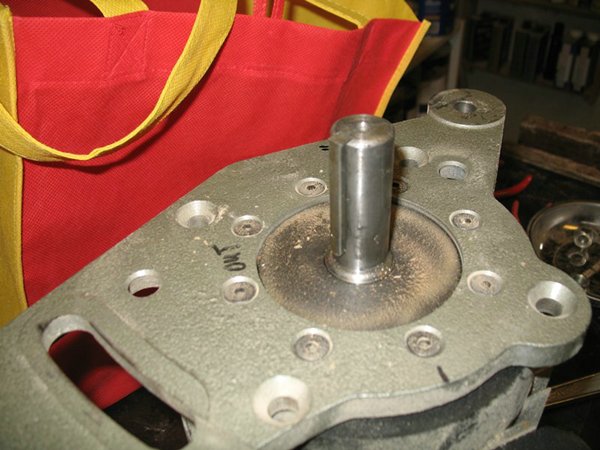
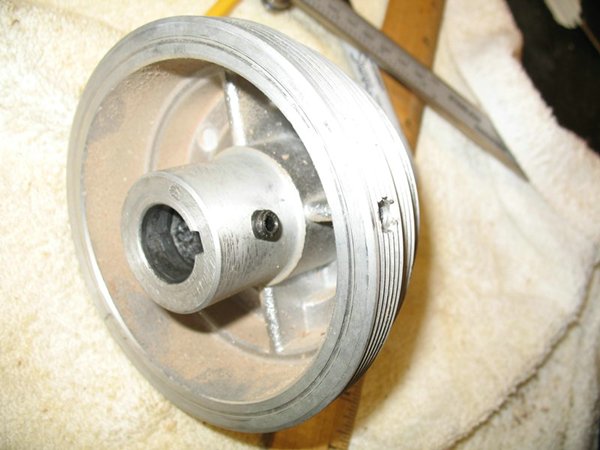
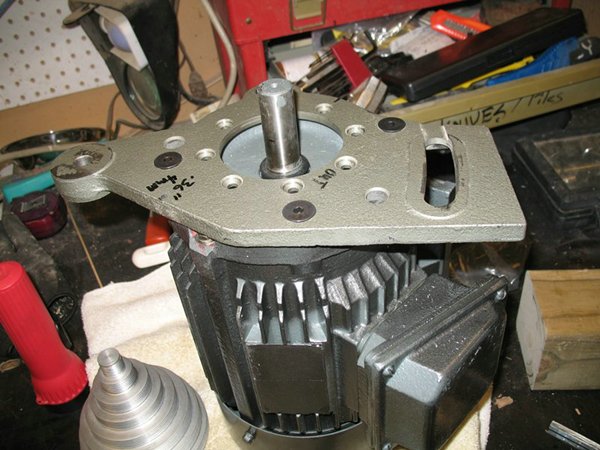
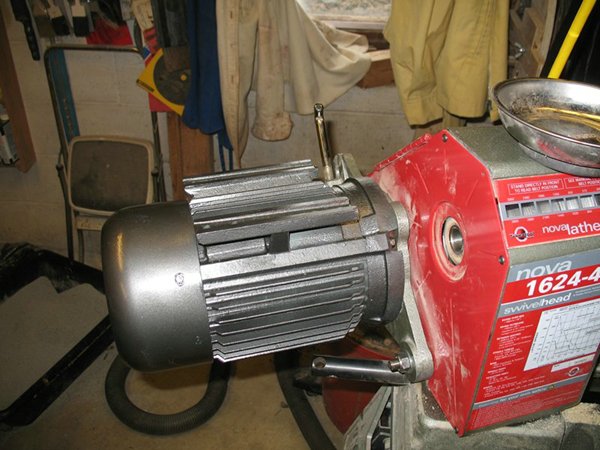
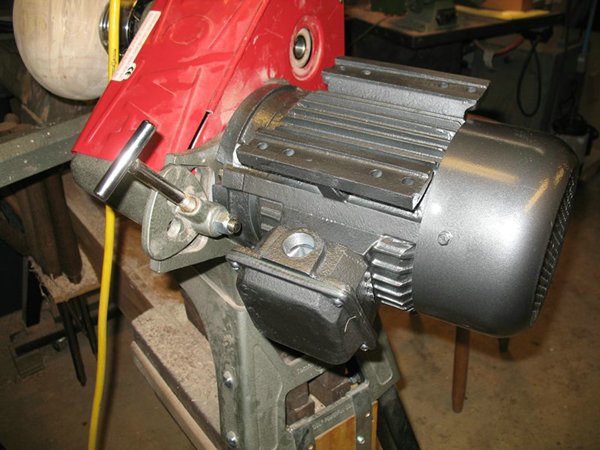
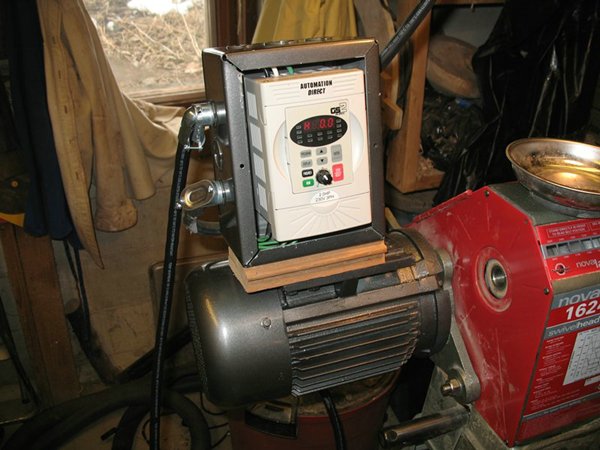
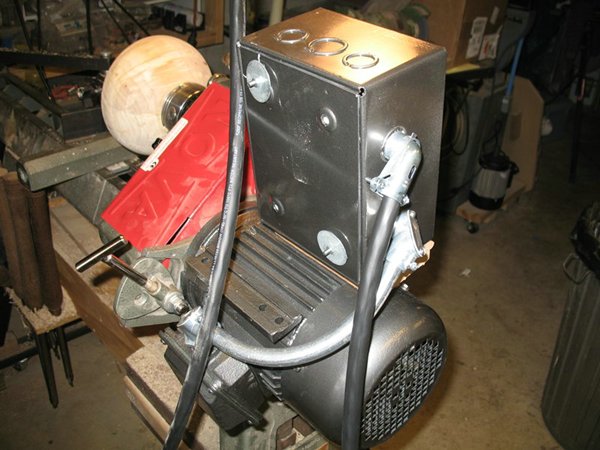
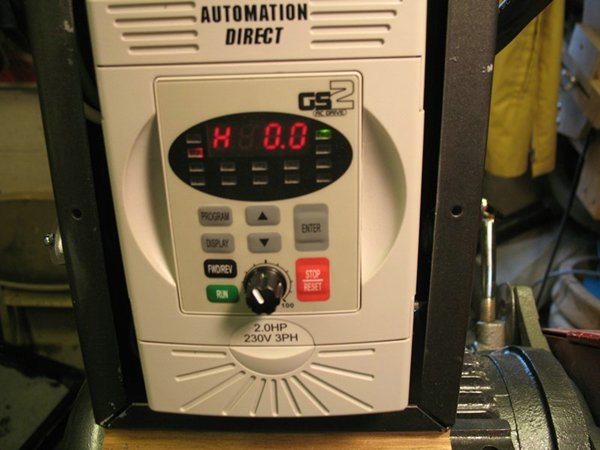
|
|







